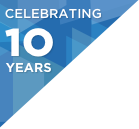Presentation: GoshawkDB: Making time with Vector Clocks
Location:
- Mountbatten, 6th flr.
Duration
Day of week:
- Tuesday
Key Takeaways
- Understand that data stores are still an exciting area of technology, and there are still ways to make them better.
- Understand the architectural and algorithmic choices when attempting to solve challenging issues with distributed data stores.
- Hear GoshawkDB’s innovative approach to model causality.
Abstract
It's well understood how logical clocks can be used to capture the order in which events occur. By extension, vector clocks encode when an event occurred across a distributed system. GoshawkDB reverses this idea: by analysing the dependencies between transactions, each participant calculates a vector clock that captures the constraints necessary to achieve strong serializability. The vector clocks from the different participants in a transaction can then be combined safely using the same techniques as CRDTs. This allows GoshawkDB to achieve strong serializability without imposing a total global ordering on transactions.
In this talk I will demonstrate these algorithms: what dependencies do we care about between transactions, how can we capture these with Vector Clocks, how we can treat Vector Clocks as a CRDT, and how GoshawkDB uses all these ideas and more to achieve a scalable distributed data store with strong serializability, general transactions and fault tolerance.
Interview
Similar Talks
Tracks
Covering innovative topics
Monday, 7 March
-
Back to Java
What to expect in Java 9 and Spring 5
-
Stream Processing @ Scale
Big data, fast-moving data. Practical implementation lessons on Real-time Data
-
DevOps & CI/CD
Lessons/stories on optimizing the deployment pipeline
-
Head-to-Tail Functional Languages
Free-range Monads, Tackling immutability, tales from production, and more...
-
Architecting for Failure
Your system will fail. Take control before it takes you with it
-
21st Century Culture from Geeks on the Ground
New ways to organise technology companies and workplace culture
Tuesday, 8 March
-
Architectures You've Always Wondered about
In-depth technical case studies from giants like: Microsoft, Netflix, Google, Twitter, and more...
-
Close to the Metal
Get efficiency back into your code, concepts like: cache efficient algorithm and lock free data structures
-
Containers (in production)
Real-world lessons on scalability and reliability in production container deployments
-
Modern CS in the real world
Real-world Industry adoption of modern CS ideas
-
Security, Incident Response & Fraud Detection
Master-level classes on building security into your system and responding to incidents when things go wrong.
-
Optimizing You
Keeping life in balance is always a challenge. Learning lifehacks
Wednesday, 9 March
-
Disrupting Finance
Technology advances in finance (blockchain, P2P, Machine Learning, API's)
-
Modern Native Languages
Modern native languages: Safe efficiency with Go, Rust, Swift
-
Full Stack Javascript
Level up Javascript with topics like Angular, React/ReactNative, Node, Mongo/Couch/Other, Falcor, GraphQL, etc
-
Data Science & Machine Learning Methods
A developer's data science and machine learning toolkit
-
Microservices for Mega-Architectures
Practical lessons on Microservices success.
-
Modern Agile Development
Revisiting Agile today and tackling challenges we are seeing in the wild




